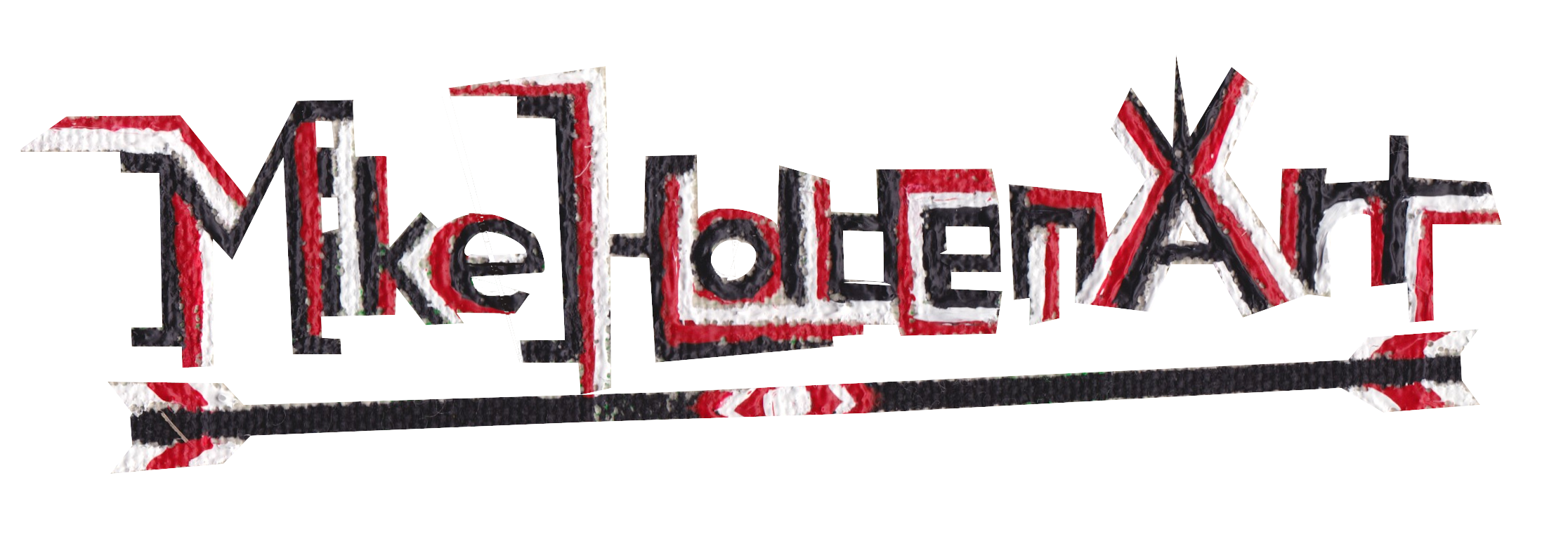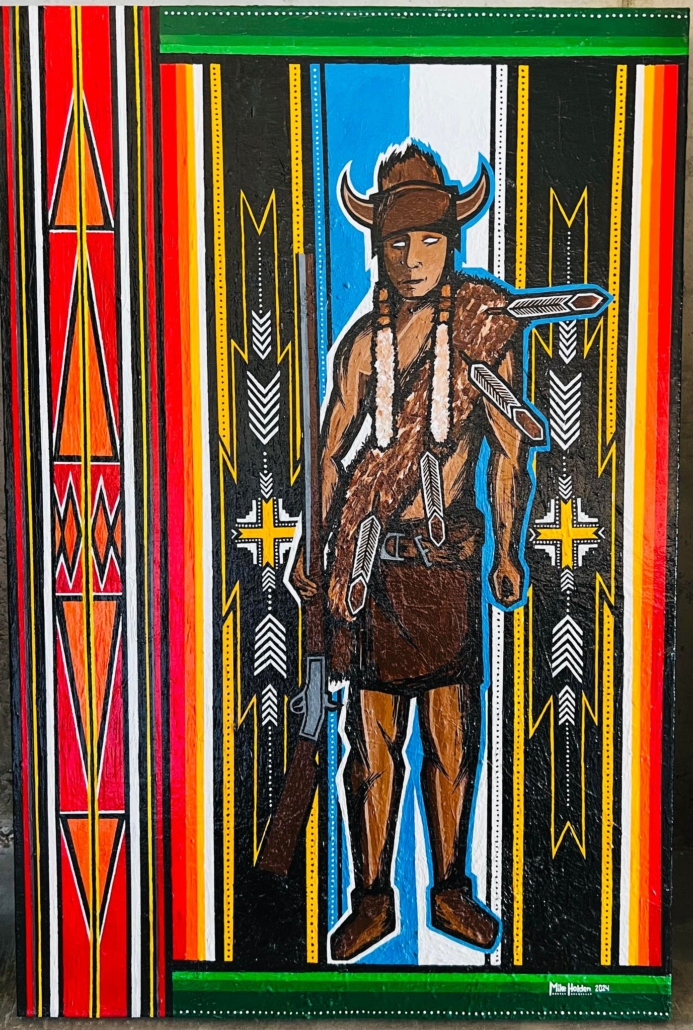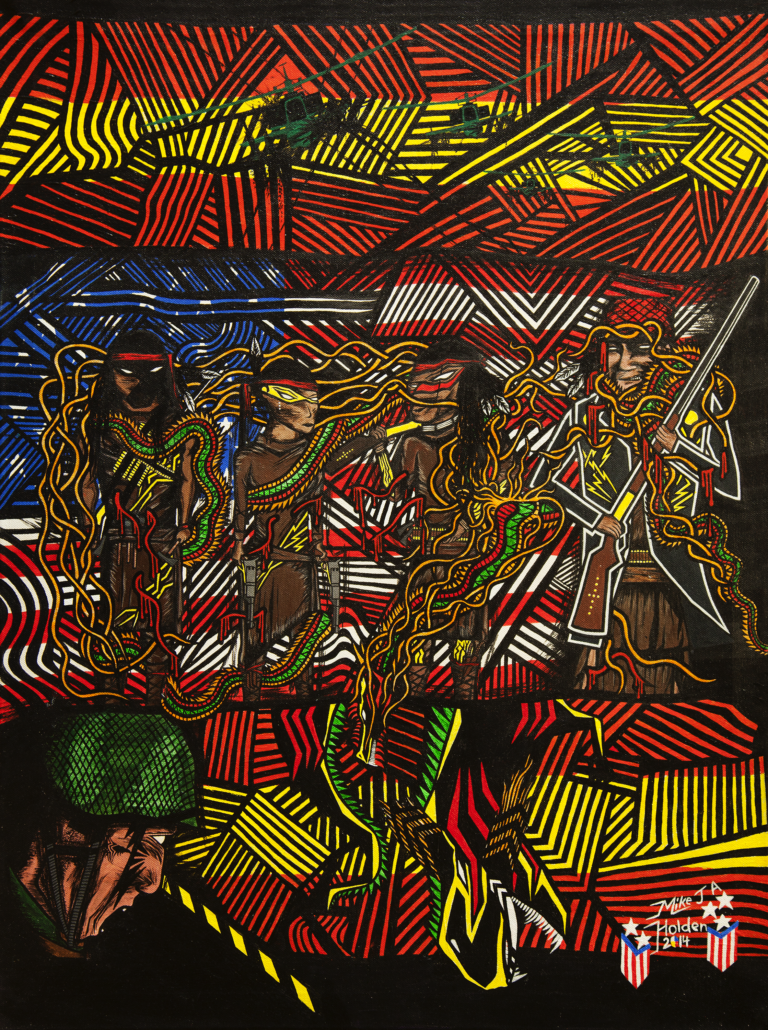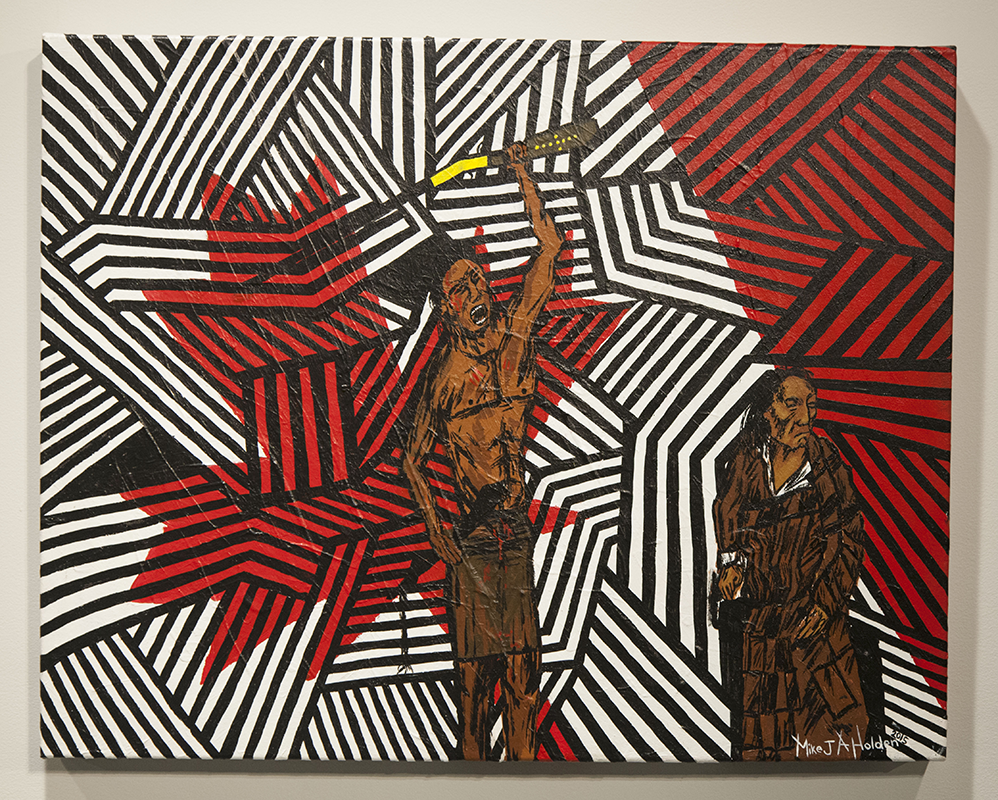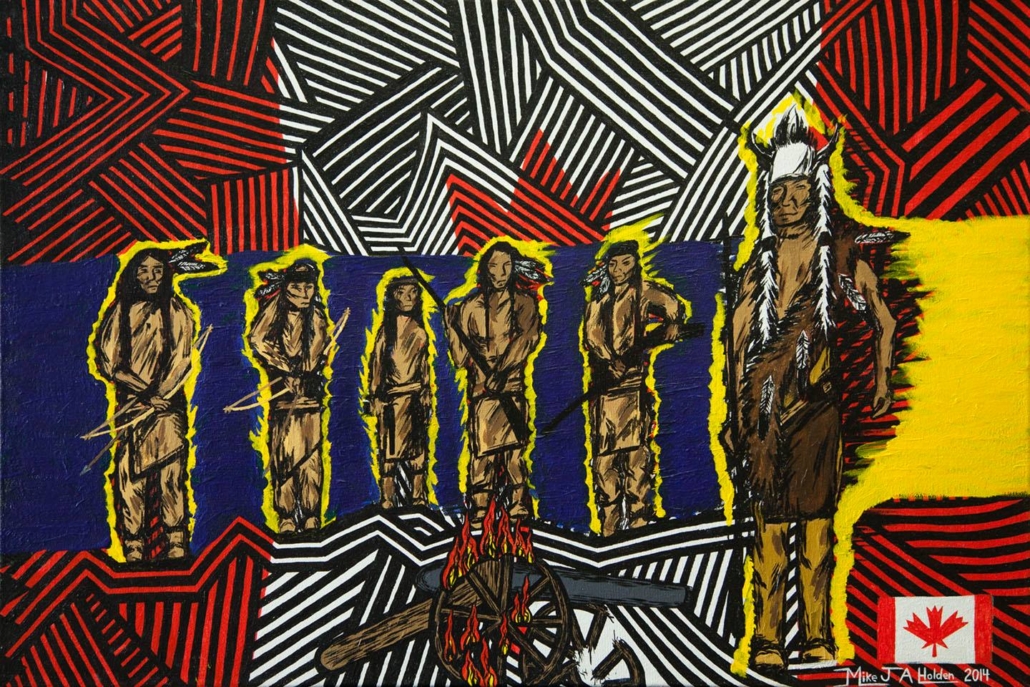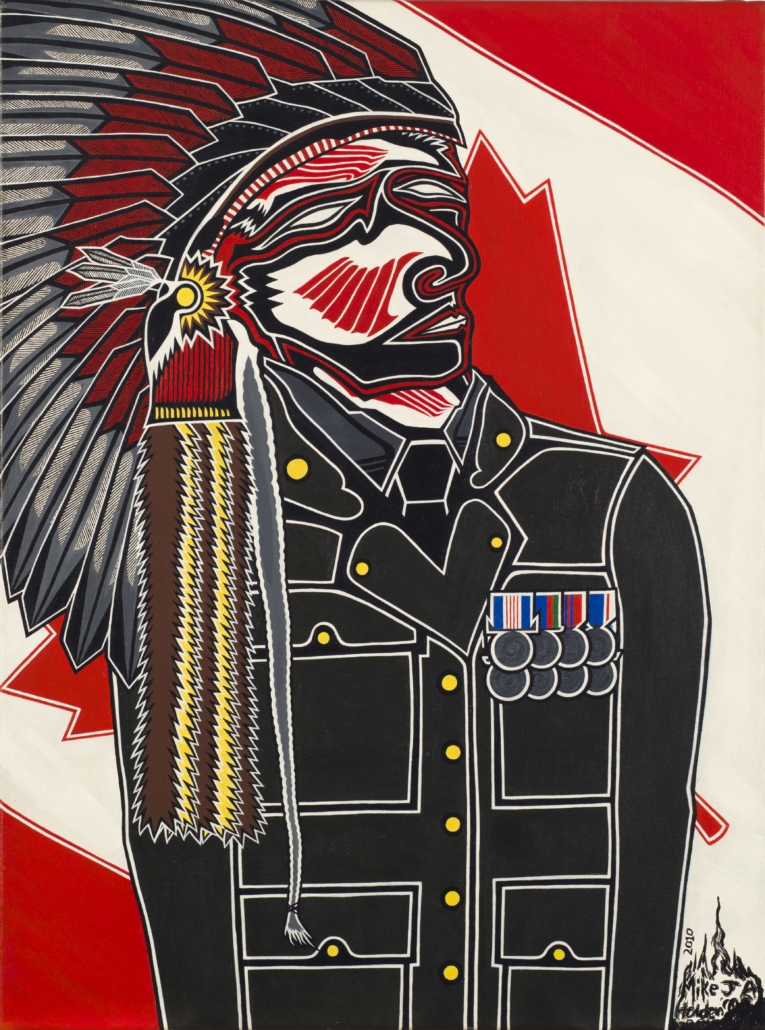Acrylic on Canvas
32″ x 20″
The War of 1812, often overshadowed by the Napoleonic Wars in Europe, became a defining moment in Canadian history—a crucible that shaped its national consciousness. At the time, British forces in Canada were sparse, with only a handful of soldiers and outposts standing against the significantly larger American forces. The British defense, however, was bolstered by their crucial Indigenous allies from the Great Lakes and Ohio Country regions. These alliances proved indispensable in resisting American incursions and even taking the fight into U.S. territory.
At the heart of this remarkable defense were two extraordinary leaders who symbolized unity despite their differing origins. Tecumseh, the Shawnee chief, was a visionary who united one of the largest Indigenous confederacies east of the Mississippi to oppose American expansion into Indigenous lands. General Isaac Brock, a British officer stationed reluctantly in Canada while aspiring to command in Europe, became an unlikely hero through his leadership and respect for his Indigenous allies. Both men sacrificed their lives in battle—Brock at Queenston Heights in 1812 and Tecumseh at the Battle of the Thames in 1813—but their legacy endures as a foundation of Canada’s identity.
This painting captures a moment of unity and shared purpose through the symbolic handshake between Tecumseh and Brock, signifying their alliance against a common foe. Brock’s uniform is adorned with two eagle feathers, a gift from the Shawnee to honor his courage and respect for their people. Surrounding them are powerful spiritual symbols: a buffalo skull and a Thunderbird, both protectors of humanity. Though buffalo are native to the West, their spirits transcend borders, watching over all people. The Thunderbird, a being of immense power in Indigenous traditions, shares its strength with the buffalo through four lightning bolts in the painting. Together, these elements highlight the spiritual significance of the alliance, the resilience of the land’s protectors, and the shared strength that defied the odds.
The buffalo skull is adorned with war paint, embodying the readiness to defend and the profound connection to the spirits of the land. Through these vivid symbols, The War of 1812 not only commemorates a pivotal historical alliance but also pays homage to the enduring spiritual guardianship that continues to inspire unity and resilience.
